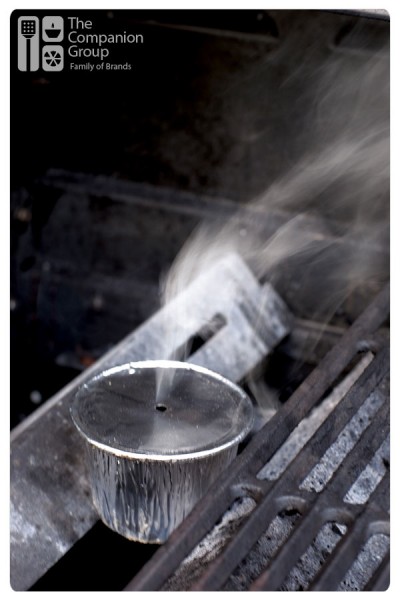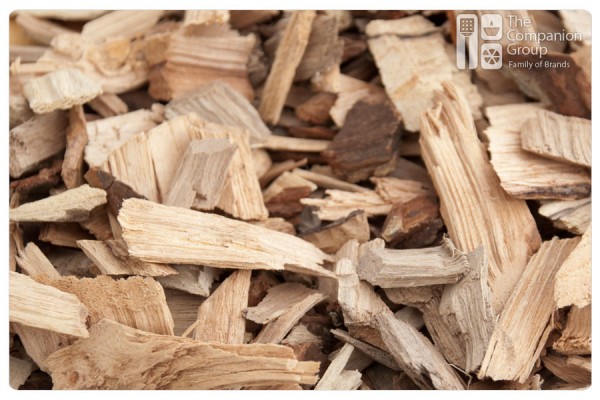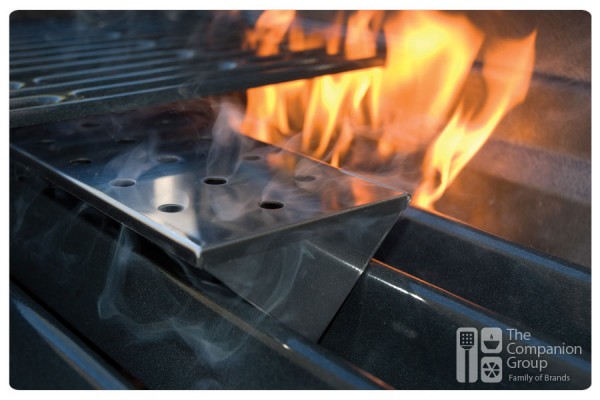The Art of Smoking
The definition of barbecue is to cook something slowly and at low temperatures, using the smoke from a wood fire. Different than grilling, barbecuing involves a variety of different woods that these days have come to take on different forms. Wood chips, pellets, chunks, and even sawdust are now used in conjunction with a low, smoldering fire to cook foods to tender, smoky perfection. Smoking can produce some amazing food, but as a process it can be tricky for a first-timer. Today we’ll take an in-depth look at the different forms of wood used to smoke meat, and how to successfully use them.
Slow and Steady Wins the Race
Remember the story of the tortoise and the hare? Think of smoking like you’d think of the tortoise: slow and steady. By this we mean low temperatures (slow) and consistent temperatures (steady). Sure, you can cook fast on a grill, maybe you’ve got a small piece of meat like a pork chop, steak or chicken breast. But the types of meats popular in smoking are popular for a reason. They’re usually tougher, cheaper cuts of meat that require hours of extra cooking time at lower (and more consistent) temperatures to come out tender.
When you smoke meats on a barbecue, temperature control is extremely important. Typically you’ll want to maintain a temperature of 225° or 250°F, depending on what you’re cooking. There are a couple tricks you can use to keep your temperatures where they need to be, one of which is to use a water pan. This technique works for a number of reasons, but mainly placing a water pan under the grill grates creates a humid environment. Since water is a better conductor of heat than air, temperatures inside a humid grill are less likely to spike or drop above or below the desired number.
Smoking Wood Formats
- Wood Chips – Wood chips come in a few different flavors and blends that can be used for a wide assortment of different meats. Perhaps the most recognized and widely available form of smoking wood, wood chips are affordable and can be mixed or blended to produce customized flavors. Wood chips are soaked in water, drained, and placed into a smoker box on the grill.
- Wood Pellets – Wood pellets also come in a variety of different flavors and blends, but they can also vary in quality. Pellets are formed by compressing finely ground wood (sawdust) into a cylinder shape anywhere from 1/8 “ to ¼” in length. Unlike wood chips, pellets do not require soaking and can produce more smoke compared to an equal amount of wood chips. Pellets are also used in combination with a smoker box, which in some cases can easily be refilled while cooking without the need to remove your grill grates. Be picky when selecting pellets and choose a brand that doesn’t contain fillers or additives to avoid off flavors or inconsistent temperatures.
 Smoke in a Cup – As the name implies, smoking cups are comprised of aluminum cups filled with sawdust. A lid on the cup keeps the fuel smoldering as smoke is released through a small hole. Smoke in a cup is a convenient, cost effective way to add smoke flavor to grilled foods. Using a smoking cup is as simple as removing its packaging and placing it near the fire. These cups work great when you need smoke in a pinch, or if you don’t have time for the extra procedures needed with wood pellets or chips.
Smoke in a Cup – As the name implies, smoking cups are comprised of aluminum cups filled with sawdust. A lid on the cup keeps the fuel smoldering as smoke is released through a small hole. Smoke in a cup is a convenient, cost effective way to add smoke flavor to grilled foods. Using a smoking cup is as simple as removing its packaging and placing it near the fire. These cups work great when you need smoke in a pinch, or if you don’t have time for the extra procedures needed with wood pellets or chips.- Wood Chunks – Wood chunks are another great way to add smoke to your next grill session. Unlike pellets or chips, wood chunks don’t require the use of a smoker box or the need to be soaked. Also, they burn longer than chips or pellets and only require a few pieces for long lasting, flavorful smoke.
Wood Flavors
After you’ve selected your desired format of smoking wood, it’s time to pick a flavor. Some woods have a limited range of meats they pair well with, while others are able to pair well with just about any meat. Take a look at the following list for some tips on which woods to use with what meats:
- Hickory – Works well with any meat. Stronger flavor, so use in moderation.
- Mesquite – Strong flavored wood, best for beef and pork. Use sparingly on light flavored meats.
- Oak – Goes well with most meats.
- Maple – Pork and poultry are best. Medium flavor profile, not too strong, not too weak.
- Fruit woods (apple, cherry, peach) – Primarily pork and chicken.
- Alder – Primarily used for fish, but also works well on beef and pork.
These pointers should give you a great start to smoking your first (or maybe just your next) dinner. If you need any more information, the team over at Amazing Ribs created a comprehensive guide that covers anything else you could possibly want to know about the art of smoking.







No comments yet.